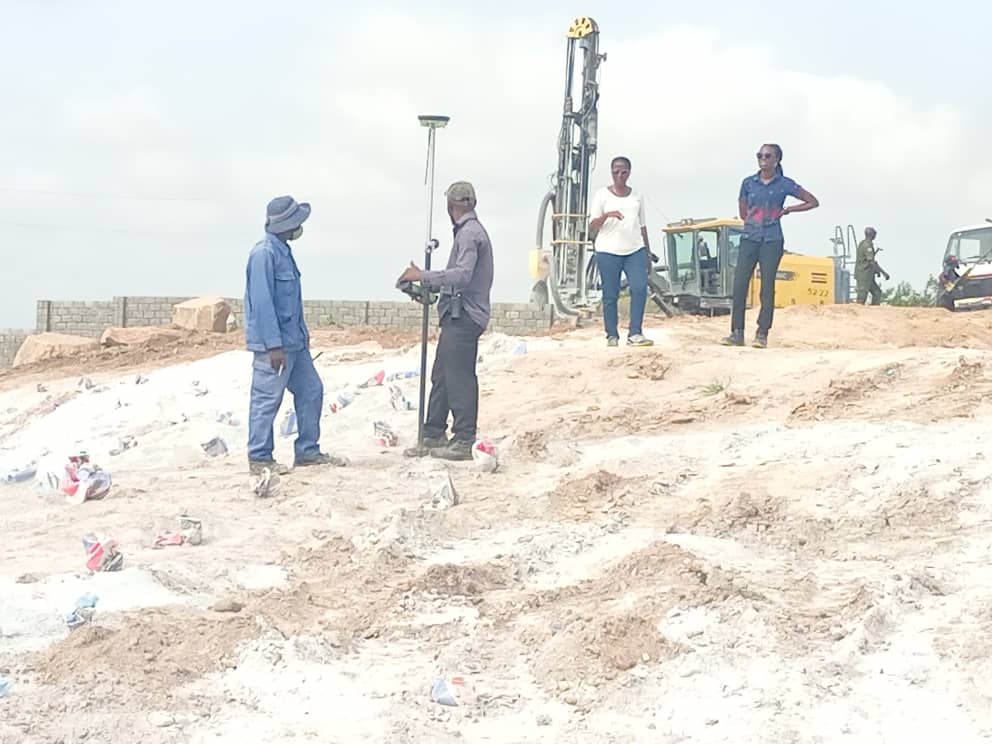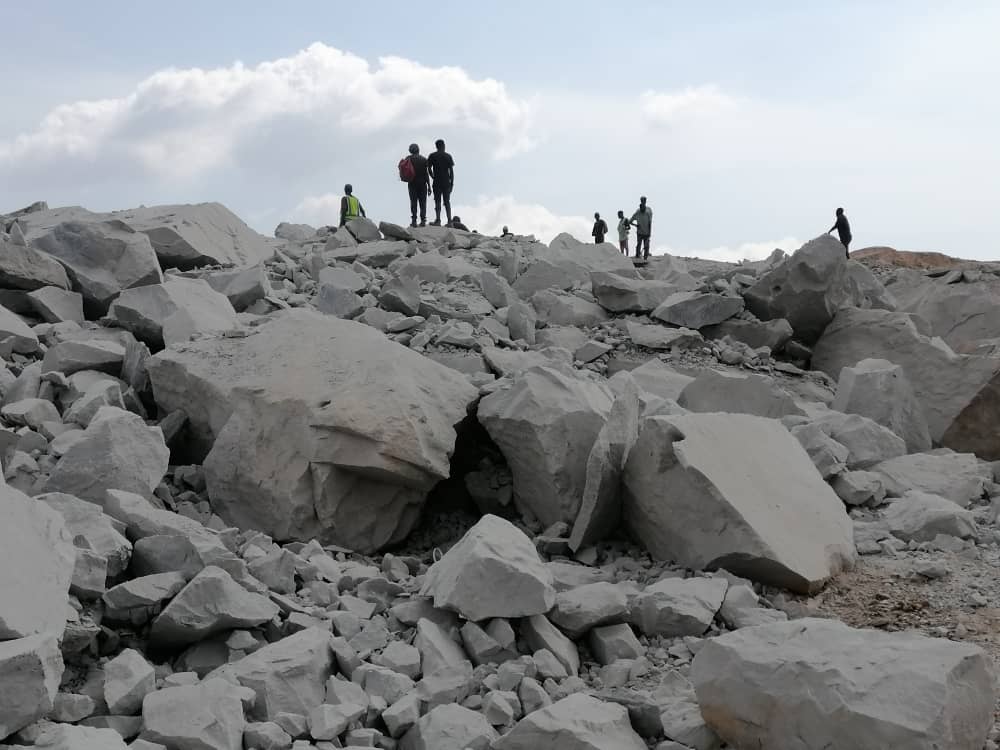Rock blasting is the process of removing rock and other earth materials from areas where they are not wanted or needed. The material blasted away can be used to create new surface features, or fill in depressions.
Rock Blasting Process
Rock blasting is a process used to remove rock and other debris from a site. The process can be broken down into three main steps:
- preparatory work,
- blasting,
- cleanup.
Preparatory work includes removing any vegetation or other obstructions from the area to be blasted. This is important because overgrown vegetation can block the flow of the blast wave, leading to the less effective clearing of the target area. Additionally, removing any objects that may fall during the blasting process can also reduce potential damage to surrounding structures.
Blasting is the main stage of rock blasting, and it involves using explosives to create a powerful shockwave that clears the target area. The shockwave creates cavities in the rock that quickly fills with air and dust, carrying away the debris.
Cleanup is essential after a rock blast operation has been completed. This involves removing all debris and wreckage from the target area, as well as cleaning up any residual explosives residue. Cleanup efforts may include using water cannons or other cleaning equipment to remove debris, as well as sealing any cracks or openings in the ground that could allow further debris accumulation.
Preparation for Rock Blasting
Before blasting begins, the crew must carefully prepare the site by removing any nearby objects that may be damaged by the blast. They will also need to clear away any dust or debris that the explosion may create.
Once the area is ready, the crew will set up the blasting equipment and begin loading the slurry into the cannon. The cannon will then be fired at the target, breaking it down into smaller pieces.
Rock blasting can be dangerous, and crews should always wear safety gear, including masks, gloves, and boots. If anything goes wrong during the blasting process, workers should immediately stop and take precautions to avoid injury.

Types of Rock Blasting
There are many different types of rock blasting and each has its own advantages and disadvantages. Here we will discuss the different types of blasting and their uses.
- Conventional blasting: This is the most common type of blasting and is used to remove large rocks, stones, and concrete from construction sites, highways, airports, quarries, and other sites. The blast energy is transmitted using a high-pressure jet through a nozzle at the end of the blast tube. The force of the jet blows the object apart and fragments fly into the air.
- High-intensity explosive (HI-EX) blasting: This type of blasting is similar to conventional blasting but uses high-explosive charges to create more powerful blasts that can penetrate deeper into the target material. HI-EX blasts are also less likely to cause environmental damage than conventional blasts.
- Microblast (MB) blasting: MB blasting is used to break up large rocks into smaller pieces that can then be easily removed by hand or with a small machine. MB blasts use very small explosives that cause little damage to surrounding structures.
After the blasting, what to do with the debris
After blasting, the debris will need to be cleaned up. There are a few options for what to do with this material. One option is to simply leave it where it is, as it can be used for landscaping or as part of a memorial. Another option is to collect the debris and bring it back to the site of the blast for disposal.

Rock Blasting Equipment
Rock blasting is a great way to remove unwanted rocks and debris from your property. There are several types of rock blasting equipment available, and each has its own advantages and disadvantages.
Some of the most popular types of equipment include the impact hammer, the rotary hammer, and the explosive charge. Impact hammers use a metal head that hits the target rock repeatedly. Rotary hammers use a spinning drum that does the same thing. Explosives are used to blast the target rock into small pieces.
Cost of blasting rock
Blasting rock is a process where a high-pressure water stream is used to break up and remove large boulders or rocks. The size of the rock, the angle of the blast, and the type of blasting equipment used all affect the cost of blasting.
The average cost of blasting a boulder varies depending on its size and location. Estimates for a small to medium boulder range from $200 to $600, while an oversized boulder can cost upwards of $10,000. The price also depends on the type of blasting equipment used, with handheld explosives typically costing less than more sophisticated machines.
Despite the variance in costs, blasting rock is one of the most common methods employed in land clearing and construction. Its low cost makes it an attractive option for projects that require large chunks of rock to be removed quickly, such as road construction or mining operations.
What is meant by rock blasting?
Rock blasting is a technique used to remove rocks and boulders from a site. It is a very effective way to improve the appearance of a land or property. The aim of the rock blasting is to create a smooth, even surface on the ground that can be used for construction or landscaping. The rocks and boulders are broken into small pieces by the explosives that are used in the blast. This leaves a smooth, LEVEL surface that is easy to work on.
What is the process of rock blasting?
Rock blasting is a process that uses high-powered explosives to break up rock and other materials. The aim is to create a smooth surface so that the construction or renovation can take place. The process is usually done in an open area where the debris can be easily collected. It’s important to choose a contractor who has experience with this type of work, as improper execution can lead to damage and cost overruns.
What do they use for rock blasting?
Rock blasting is a process used to remove large rocks from a construction site or land. The rocks can be very dangerous if they fall off the construction site and are crushed by traffic or other objects. To reduce the risk of these accidents, rock blasting is often done with explosives. The explosives blast the rock away from the site, leaving a safe path for workers and equipment.
What is required before blasting?
Before blasting any rock, it is important to understand the safety requirements. The equipment used in rock blasting must be safe and properly maintained.
In addition, the area where the rock will be blasted must be free of any obstructions, such as trees or power lines. The blasting must also take place during daytime hours when the traffic is minimal.

